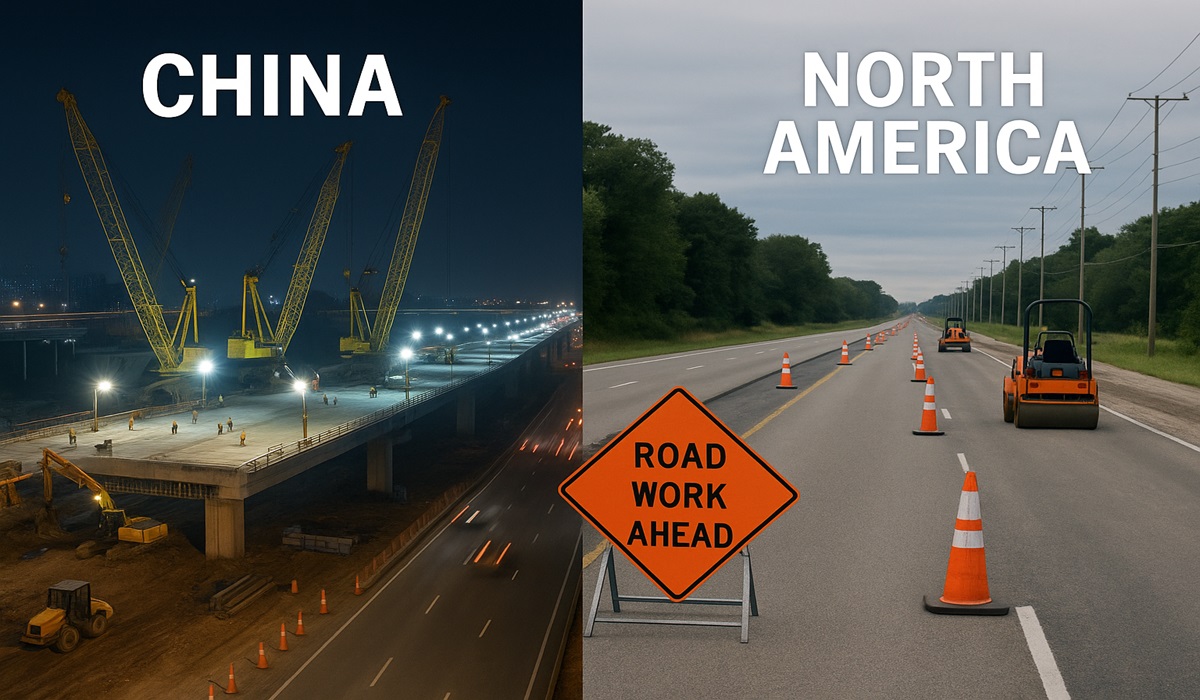Why China Builds Roads in Hours While North America Takes Months: A Wake-Up Call on Efficiency
- TDS News
- Business
- Trending News
- May 29, 2025

In cities across Canada and the United States, building less than a kilometre of road can take three to four months. That’s not an exaggeration — it’s a norm that commuters have come to expect, and municipalities often plan for. Now, compare that with China, where similar infrastructure projects are regularly completed in a matter of hours. The contrast is jarring, and it forces a necessary question: why?
At the heart of the difference is a fundamental divergence in approach — not just to road building, but to how infrastructure is managed, financed, and executed. China’s construction model is built on a system of streamlined incentives and accountability. Contractors are typically paid only once a project is completed, and at the price agreed upon at the time of the contract award. This structure leaves no room for cost creep or endless delays. In fact, time becomes the contractor’s greatest constraint — the faster the job is completed, the sooner they are paid.
In North America, the model looks very different. Contractors are usually paid in stages, with significant portions of funding delivered up front and throughout the life of the project. These payments are often tied to milestones, not final delivery, which removes the urgency to finish the job quickly. Worse, the longer the project drags on, the more opportunity exists for add-ons: change orders, scope adjustments, and cost overruns. These elements aren’t always abused, but they create an environment where speed is not rewarded, and delay is often tolerated — or even profitable.
This is not about ability or talent. Canadian and American construction professionals are some of the most technically skilled in the world. The issue isn’t competence — it’s the system they work within. A model that’s slow to adapt, rigid in its processes, and often bogged down by layers of bureaucracy, from permits to public consultations to overlapping jurisdictions. These barriers, while often well-intentioned, can strangle efficiency and leave taxpayers frustrated by timelines that no longer make sense in a fast-moving world.
Meanwhile, China has adopted a project delivery model that embraces change, speed, and accountability. The results are visible across its vast road networks, bridges, high-speed rail systems, and housing developments. It’s a system designed not just to build — but to build now.
The numbers speak for themselves. China builds tens of thousands of kilometres of road annually, often in remote or challenging terrain. In North America, similar goals would take decades to realize. The difference isn’t just one of scale — it’s one of mindset. One system is future-facing, built on delivery. The other is locked in a framework that still treats delay as an inevitability.
There’s no reason Canada and the U.S. can’t catch up — but doing so will require more than tweaking budgets or rewording contracts. It will mean a wholesale reassessment of how we define public infrastructure success. It will take reforms that shift incentives toward results, minimize administrative gridlock, and empower governments to demand better timelines — and get them.
The world is not waiting. It’s moving, building, growing. North America must ask itself a hard but necessary question: Are we prepared to evolve, or are we content to keep filling potholes while others lay superhighways? The choice isn’t just about roads — it’s about the future we’re paving.








